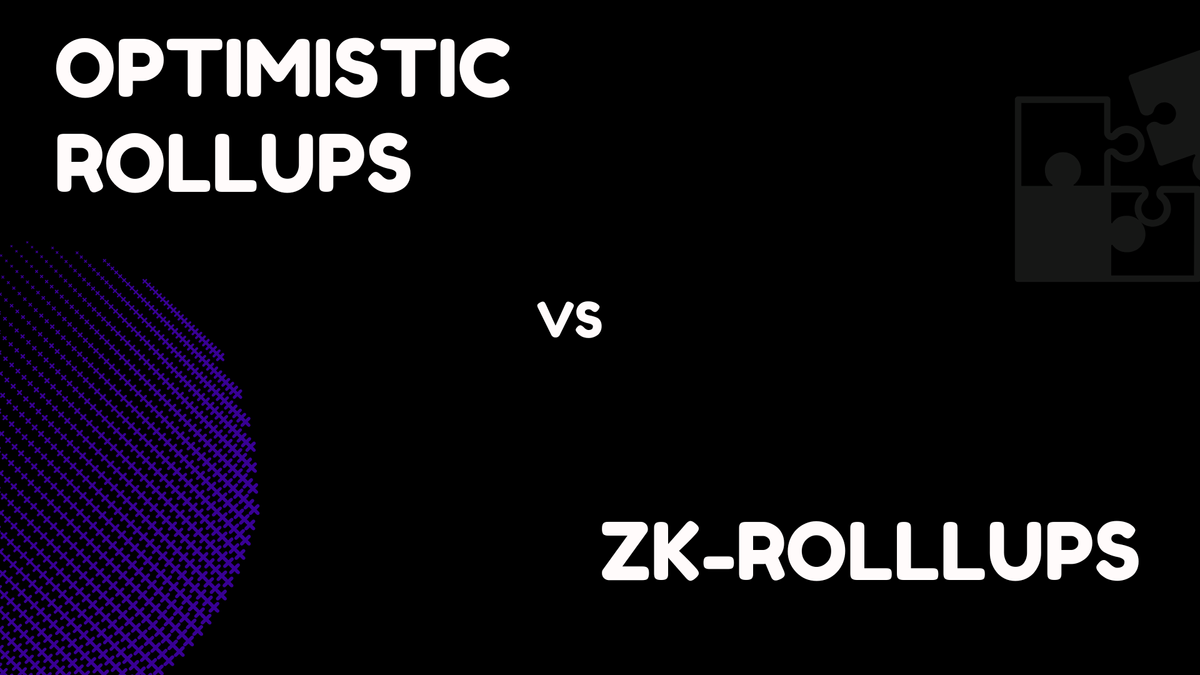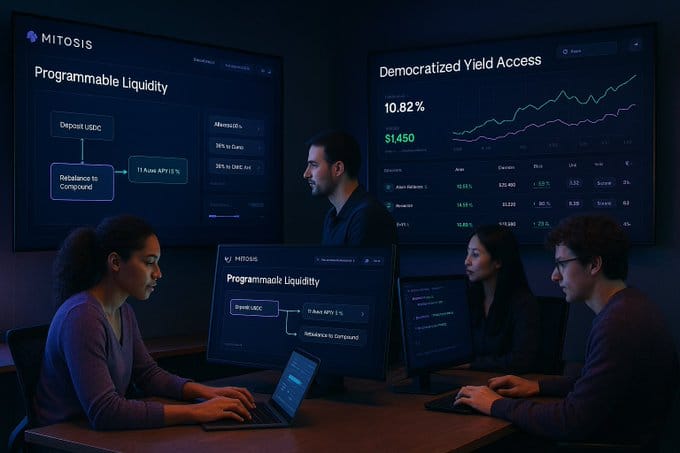Optimistic Rollups vs Zero Knowledge Rollups

Introduction
In the blockchain ecosystem, particularly for networks like Ethereum, scalability remains a persistent challenge as user demand grows. This has led to the development of layer-2 scaling solutions, with rollups being a prominent approach.
Rollups process transactions off-chain and submit summarized data to the mainchain, reducing congestion and lowering fees. Among the various types, Optimistic Rollups and Zero-Knowledge (ZK) Rollups are the most widely discussed, each offering distinct mechanisms for transaction validation and security. This survey note provides a comprehensive comparison, drawing on recent insights from 2025 sources to explore their definitions, operations, advantages, disadvantages, and use cases, ensuring a thorough understanding for developers, users, and researchers.Background on RollupsRollups are designed to enhance blockchain scalability by moving computationally intensive processes to a sidechain, easing congestion on the mainchain while stabilizing network fees and transaction speeds.
According to a 2025 update from Gemini, Ethereum’s transaction throughput can increase from around 15 transactions per second (TPS) to 1,000 TPS with rollups, significantly improving user experience (Layer-2 Scaling: zk-Rollups and Optimistic Rollups | Gemini). Both Optimistic and ZK Rollups aim to maintain the security and decentralization of the layer-1 blockchain, but they differ in their validation methods, leading to varied trade-offs.Detailed Examination of Optimistic RollupsOptimistic Rollups operate on the principle of "assume valid unless proven otherwise." This means transactions are processed on the layer-2 network with the assumption they are valid, and validity is only checked if a dispute arises. This dispute resolution mechanism, known as a fraud proof, allows any participant to challenge a transaction they believe is invalid. If proven fraudulent, the transaction is reverted, and the responsible party may lose their bond.
How They Work
- Transaction Processing: Users send transactions to the layer-2 network, where they are batched together.
- State Commitment: The current state of the layer-2 is committed to the layer-1 blockchain periodically, typically every few minutes or hours.
- Fraud Proofs: If a user believes a state transition is invalid, they can submit a fraud proof, triggering a challenge period, often up to 7 days as noted by StarkWare (ZK rollups vs. Optimistic rollups: How do they compare? | StarkWare).
- Resolution: If no fraud proof is submitted within the challenge period, the state transition is considered final.
Advantages
- High Throughput: By assuming transactions are valid, Optimistic Rollups can process a large number of transactions quickly, making them efficient for high-volume applications.
- Low Latency for Users: Transactions are confirmed almost instantly on the layer-2 network, providing a seamless user experience, as highlighted by CoinMarketCap (Optimistic Rollups vs ZK-Rollups: The Ultimate Comparison | CoinMarketCap).
- EVM Compatibility: Many implementations, such as Optimism and Arbitrum, are fully compatible with the Ethereum Virtual Machine (EVM), making it easier for developers to port existing decentralized finance (DeFi) applications without significant changes.
Disadvantages
- Security Risks: The reliance on fraud proofs means there is a window of time during which invalid transactions could be considered valid if no one challenges them, potentially leading to vulnerabilities.
- Censorship Vulnerability: Since transactions are only verified upon challenge, there is a risk of censorship if no one is willing or able to submit a fraud proof, as noted in the Matter Labs deep dive (Optimistic vs. ZK Rollup: Deep Dive | Matter Labs).
- Long Finality: Final settlement on the layer-1 can take up to 7 days, which may not be suitable for applications requiring instant finality, such as high-frequency trading.
Examples
Notable projects include Optimism Ethereum (OE), which supports existing smart contracts and off-chain wallets, Arbitrum with full EVM support, and Boba Network, which merges OE tools with privacy technologies like OMG Plasma and secure multi-party computation, launching the BOBA token via airdrop in a 1:1 ratio with OMG, as per Gemini’s 2025 update.
Detailed Examination of ZK Rollups
ZK Rollups use zero-knowledge proofs, specifically zk-SNARKs, to verify the validity of transactions without revealing the underlying data. This cryptographic method ensures that every transaction is proven valid before being committed to the layer-1 blockchain, offering a higher level of security and privacy.
How They Work
- Transaction Processing: Transactions are processed off-chain on the layer-2 network, with transactors broadcasting data like "to" and "from" addresses, transaction value, and network fees, as described by Gemini.
- ZK Proof Generation: For each batch, a zero-knowledge proof is generated that compares the blockchain state before and after the transactions, attesting to their validity without revealing details.
- Proof Submission: The ZK proof and the state difference are sent to the layer-1 blockchain.
- Verification: The layer-1 verifies the ZK proof to ensure the state transition is valid. If valid, the new state is accepted, ensuring instant finality.
Advantages
- Instant Finality: Since every transaction is verified via ZK proofs, there is no need for a challenge period, leading to finality in seconds to minutes, as noted by StarkWare.
- Enhanced Security: The use of cryptographic proofs eliminates the risk of invalid transactions, providing a higher level of security and mitigating censorship, as per CoinMarketCap.
- Censorship Resistance: Because all transactions are verified on-chain, there is no reliance on third parties to challenge invalid transactions, reducing the risk of manipulation.
Disadvantages
- Complexity: Generating ZK proofs is computationally intensive and requires specialized knowledge and infrastructure, making integration more challenging, as highlighted by Matter Labs.
- Higher Costs: The computational resources needed for ZK proof generation can be expensive, although this cost is typically borne by the network rather than individual users, according to Gemini’s 2025 insights.
- Limited EVM Compatibility: Current ZK Rollups may not be fully compatible with the EVM, which can make it more difficult for developers to integrate existing smart contracts, as noted by CoinMarketCap.
Examples
Prominent projects include Hermez, acquired by an Ethereum layer-2 project in 2021 for low-cost, secure token transfers, Immutable X for optimizing Ethereum-based NFT minting and trading with no gas fees, DeversiFi Launch Market (DLM) for token pricing with continuous liquidity, zkSync for lowering gas fees using zk-SNARKs, and Aztec, which uses privacy and rollup circuits and plans to decentralize proof generation, currently handling 128 proofs per batch.
Comparative Analysis
To provide a structured comparison, the following table summarizes key aspects based on insights from multiple sources, including StarkWare, CoinMarketCap, Matter Labs, and Gemini, all updated or published in 2023-2025
Aspect | Optimistic Rollups | ZK Rollups |
|---|---|---|
Validation Method | Assume transactions are valid unless challenged with fraud proofs | Use validity proofs (ZK proofs) to attest transaction validity |
Dispute Period | Up to 7 days, as per StarkWare | No dispute period, finality in a few hours, per StarkWare |
Security | Less secure, relies on trust in verifiers to spot fraud, per Gemini | More secure, provides cryptographic certainty, per CoinMarketCap |
Finality Time | Up to 7 days for settlement, per Matter Labs | Finality in seconds to minutes, per Gemini |
Throughput | High, processes transactions off-chain, per CoinMarketCap | High, processes transactions off-chain, per Gemini |
Cost Efficiency | Reduces fees by minimizing L1 computation, per StarkWare | Slashes fees by reducing L1 computation, per StarkWare |
Data Availability | Publishes minimal data on L1, no proofs unless challenged, per Gemini | Sends validity proof and state difference to L1, per StarkWare |
Complexity | Easier to implement, more flexible, per Matter Labs | Higher complexity, requires education and infrastructure, per StarkWare |
Scalability & Costs | Higher TPS, more gas for batch submission, per CoinMarketCap | Saves more gas, higher computational costs for ZK-proofs, per CoinMarketCap |
Latency | Low for users (instant L2 confirmation), high for finality (minutes to hours, challenge period), per CoinMarketCap | High for users (wait for proof generation), low for finality (seconds to minutes), per CoinMarketCap |
Privacy | Low (transactions and signatures revealed), per CoinMarketCap | High (uses ZK-proofs to hide details, requires public key registration on sidechain), per CoinMarketCap |
Validity Proof | Fraud proofs (assume correct, verify if challenged, risk of invalid transactions), per Gemini | Zero-knowledge proofs (verify with cryptographic evidence, more computation), per Gemini |
Readiness for DeFi | EVM compatible, supports Uniswap, Synthetix, Sushiswap, etc., per CoinMarketCap | Less EVM compatible, emerging projects like ZigZag Exchange, Loopring, zkSync, per CoinMarketCap |
Programming Easiness | Fully EVM compatible, no special skills needed, per CoinMarketCap | Not fully EVM compatible, requires advanced knowledge and specific tools, per CoinMarketCap |
Withdrawal Period | Long (more than one week, can use bridges for faster withdrawals), per CoinMarketCap | Not specified, generally faster due to instant finality, inferred from Gemini |
This table highlights the trade-offs, such as Optimistic Rollups offering higher throughput and EVM compatibility but slower finality and potential security risks, while ZK Rollups provide instant finality and enhanced privacy but at the cost of complexity and higher initial costs.
Use Cases and Application Suitability
The choice between Optimistic Rollups and ZK Rollups depends on the specific requirements of the application, as outlined by various sources. Optimistic Rollups are well-suited for applications where speed and ease of implementation are paramount, and where the risk of censorship or the need for instant finality is less critical. They are particularly popular in DeFi, supporting projects like Uniswap and Synthetix due to their EVM compatibility, as noted by CoinMarketCap. Examples include Optimism, Arbitrum, and Boba Network, which leverage existing Ethereum tools and infrastructure.
ZK Rollups, conversely, are ideal for applications requiring high security, instant finality, and potentially enhanced privacy. They are particularly appealing for use cases involving sensitive data, such as financial transactions needing regulatory compliance, or NFT platforms like Immutable X, which benefit from no gas fees and instant trade confirmations, as per Gemini’s 2025 update. Other examples include zkSync for lowering gas fees and Aztec for privacy-focused applications, both leveraging zk-SNARKs for verification.
Conclusion
Both Optimistic Rollups and ZK Rollups represent significant advancements in blockchain scaling, each with its own strengths and weaknesses. Optimistic Rollups offer a balance of speed, cost-efficiency, and ease of use, making them attractive for DeFi and applications needing quick user confirmation. ZK Rollups, while more complex and resource-intensive, provide unparalleled security and finality, suitable for privacy-sensitive or high-stakes use cases. As of April 2025, the blockchain ecosystem is likely to see both technologies coexist, with developers choosing based on specific application needs, as evidenced by recent updates from Gemini and other sources. This dynamic landscape suggests ongoing innovation, potentially leading to hybrid solutions or further enhancements in both approaches.
Key Citations
- ZK rollups vs. Optimistic rollups How do they compare StarkWare
- Optimistic vs. ZK Rollup Deep Dive Matter Labs
- Optimistic Rollups vs ZK-Rollups The Ultimate Comparison CoinMarketCap
- Layer-2 Scaling zk-Rollups and Optimistic Rollups Gemini



Comments ()